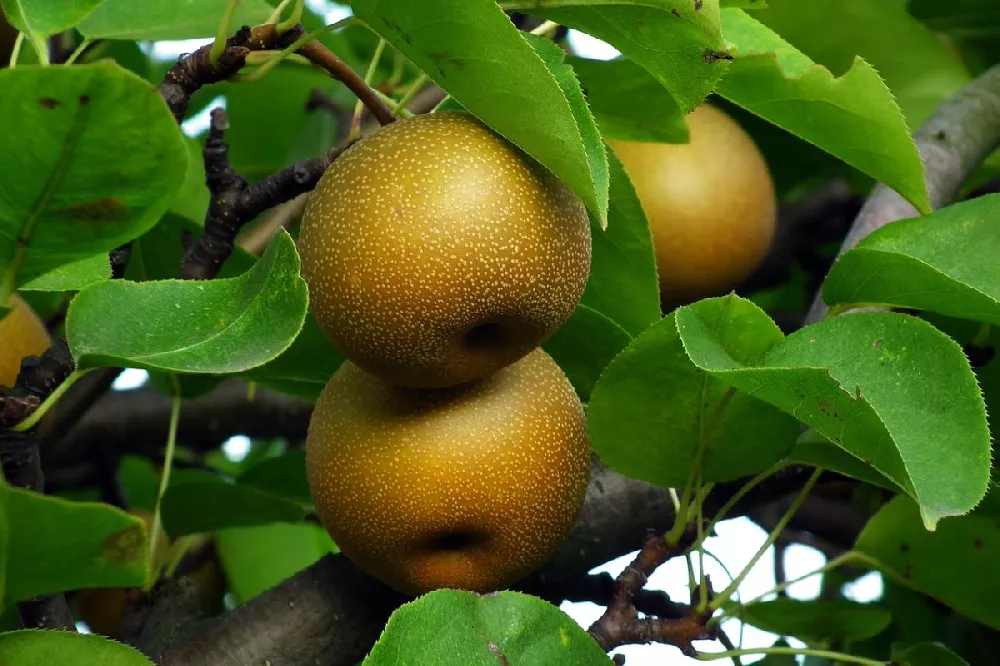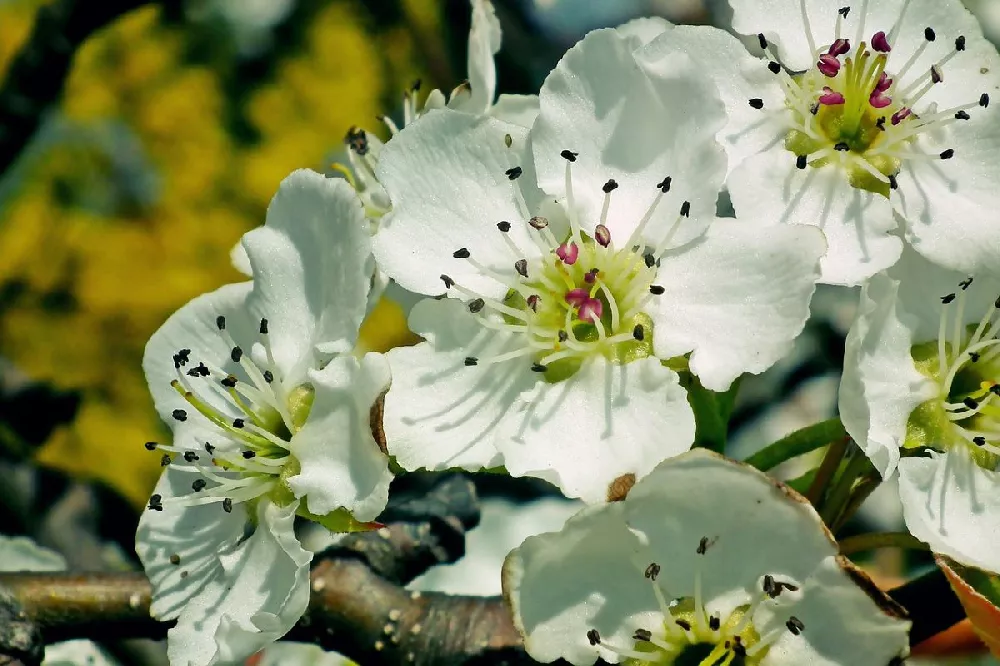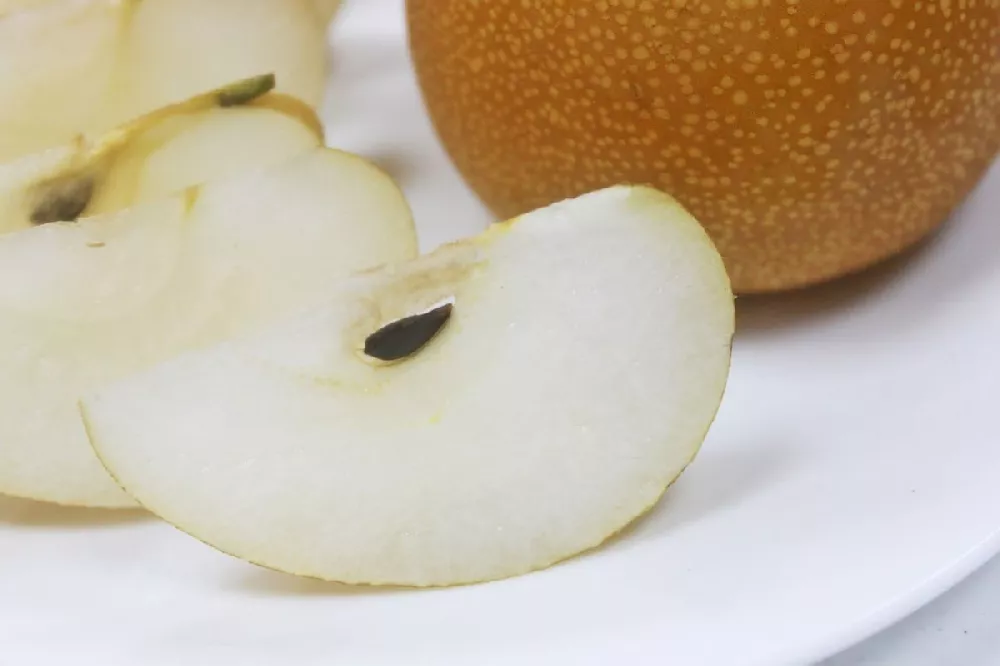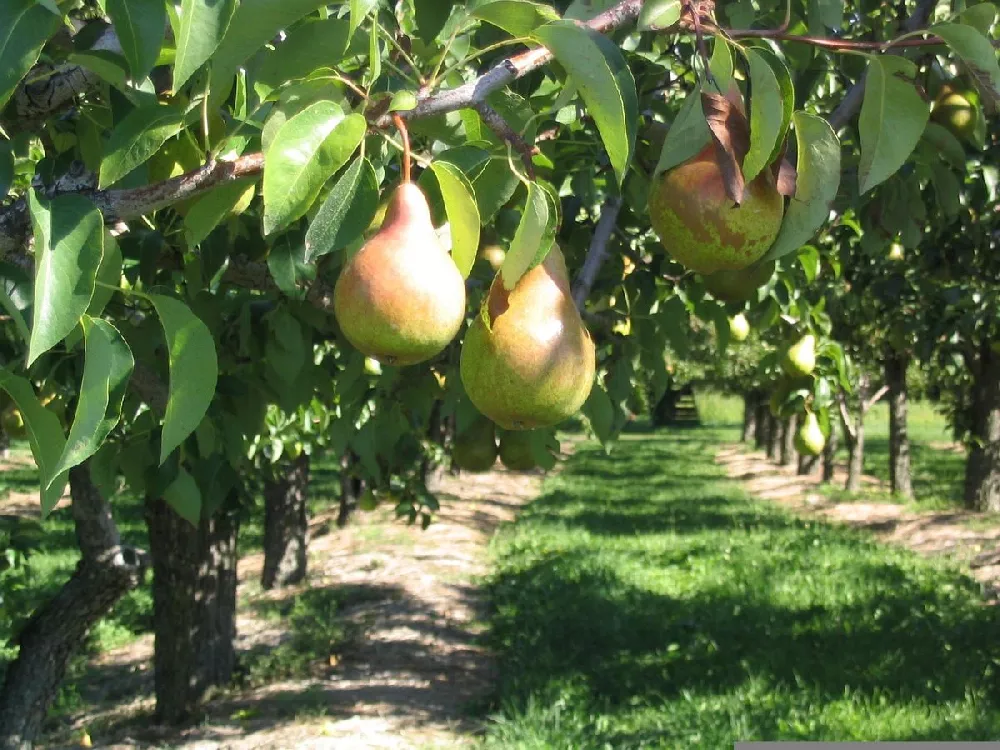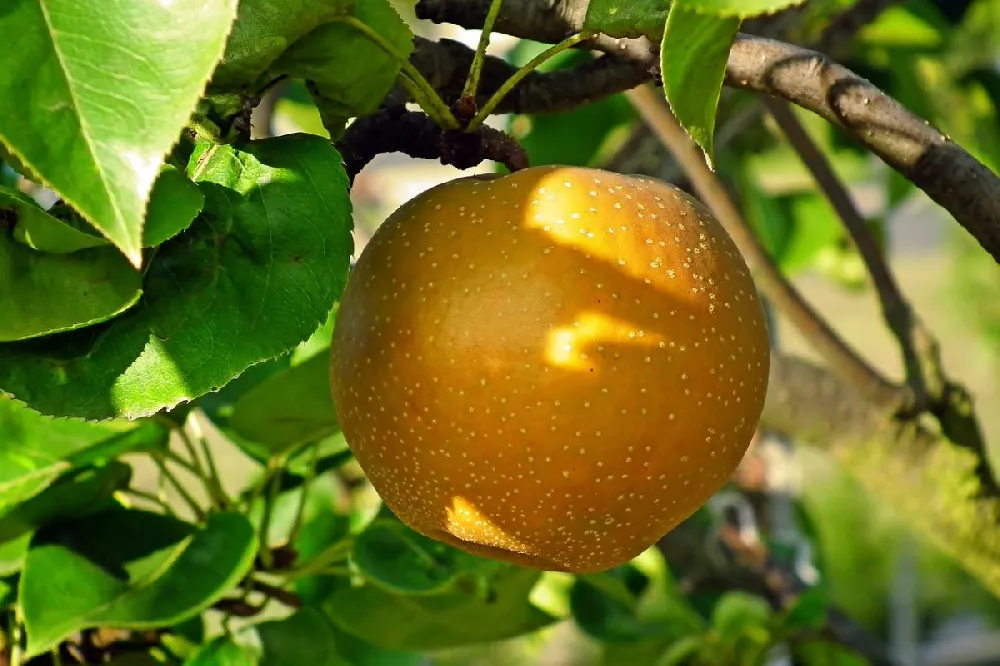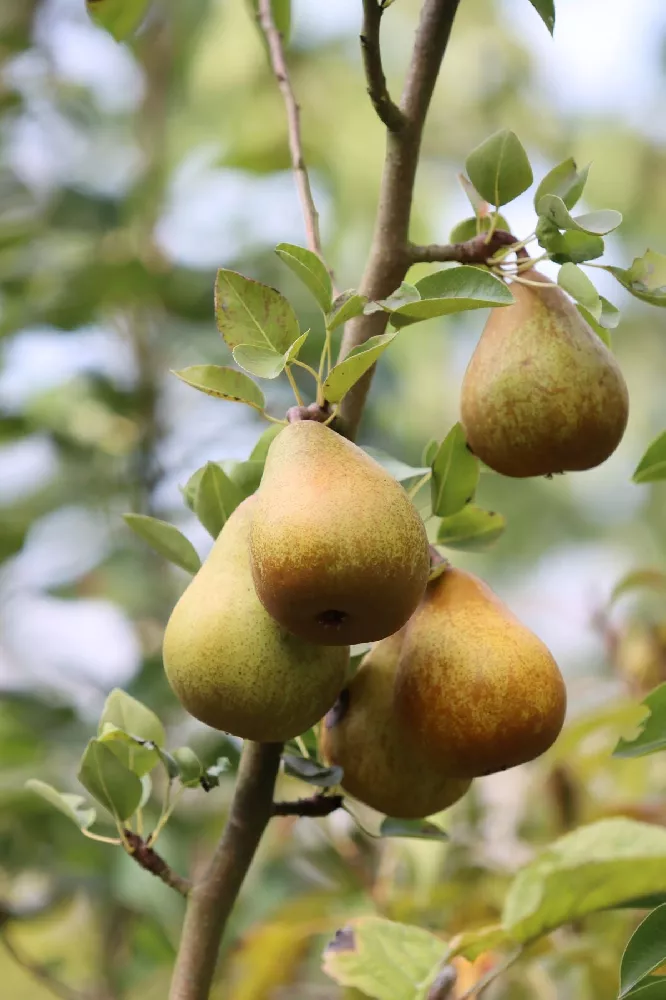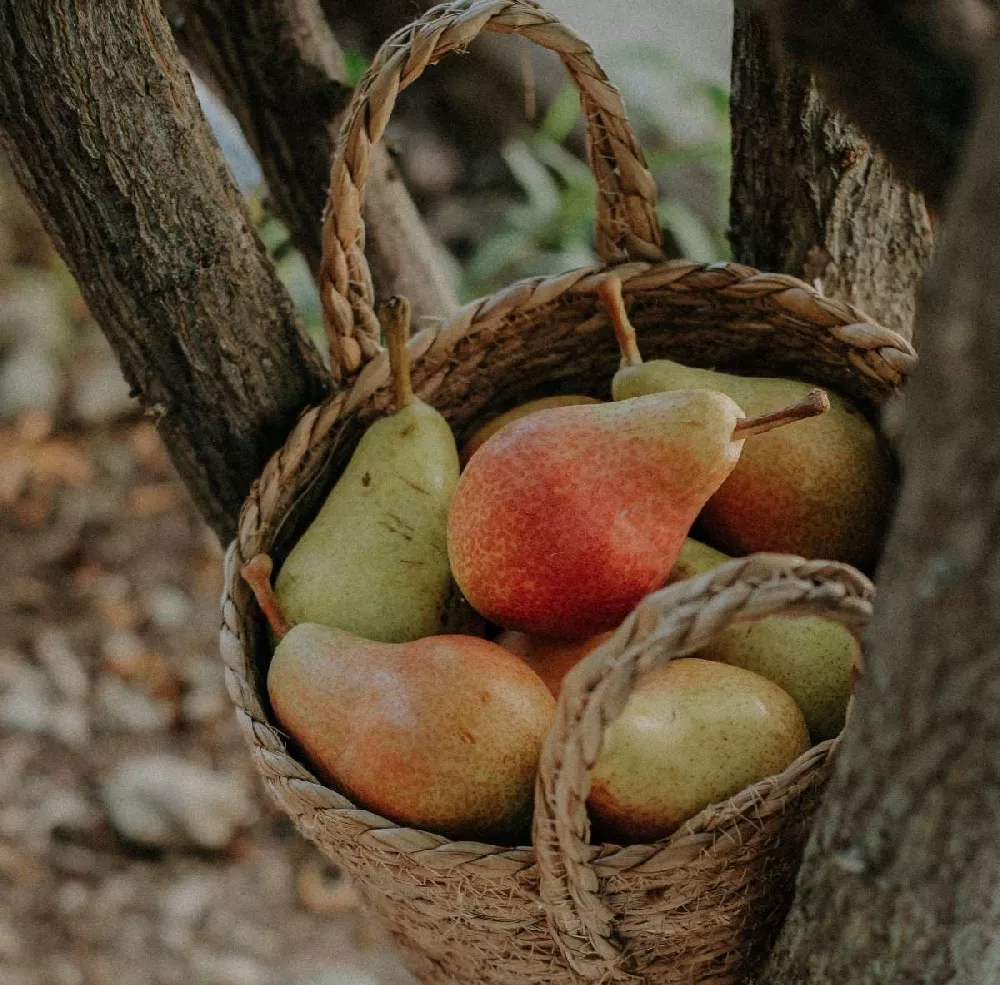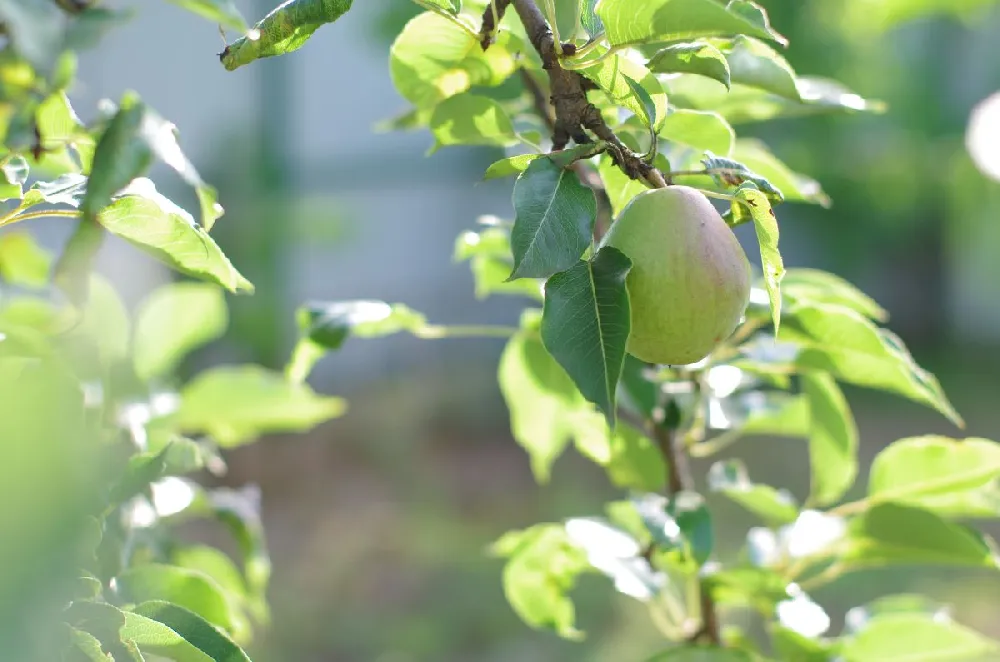- Home >
- Fruit Trees >
- Hosui Asian Pear Tree
Hosui Asian Pear Tree for Sale - Buying & Growing Guide
- Ships in 1-2 days
- 1-Year Warranty Eligible
- Pots or accessories are not included unless specified in the product options.
Shipping Details:
Once your order is shipped, you’ll receive an email with a tracking number and estimated delivery date. Most orders ship immediately, but some items are seasonal and may only ship in spring or fall. These products are noted on the website.
The fruits of the Hosui Asian Pear Tree likely look a bit different than the pears you're used to getting at the grocery store. Rather than having a classic pear shape, these pears are perfectly round, with a crisp texture and plenty of delicious flavors. The Hosui Asian Pear Tree, also known as Pyrus pyrifolia, offers a beautiful set of white flowers during the spring, along with foliage that changes colors throughout the growing season.
- The round fruits of the Hosui Asian Pear Tree are incredibly juicy.
- The Hosui Asian Pear Tree adapts to a wide range of hardiness zones.
- This plant also offers beautiful flowers and foliage.
Plant Care
Sunlight

The Hosui Asian Pear Tree should grow in a location that receives full sunlight.
Watering
You can expect your Hosui Asian Pear Tree to need water about once per week throughout most of the growing season.
Fertilizing

Fertilize this plant once per year during the mid-spring using a balanced fertilizer.
Planting and Care
Planting instructions
Since the Hosui Asian Pear Tree can survive in hardiness zones five through nine, most gardeners throughout the United States can grow this plant outdoors in the ground year-round. To do so, begin by digging a hole that is as deep as the root ball is tall and about twice as wide in a location that receives full sunlight and has loamy soil. Backfill the hole while watering, then cover the planting area with a layer of organic mulch to help maintain consistent soil moisture.
Watering and nutrients
During the first few months of growth, you should water your Hosui Asian Pear Tree multiple times per week. For the rest of this plant’s life, it will enjoy weekly watering throughout most of the growing season. However, during heatwaves and droughts, you’ll likely need to increase your watering frequency to multiple times per week once again. You can feed this plant once per year during the mid-spring using a fertilizer with a 10-10-10 blend or something similar.
Pollination
The Hosui Asian Pear Tree is a partially self-fertile plant, which means that in most cases, a single one of these plants is capable of pollinating itself and successfully producing a healthy harvest. However, there are instances in which a Hosui Asian Pear Tree can fail to pollinate itself. In those cases, you’ll need to plant another pear tree variety nearby to allow for cross-pollination. Though, whether your Hosui Asian Pear Tree can pollinate itself or not, cross-pollination typically leads to larger harvests anyway.
Pruning
You should prune your Hosui Asian Pear Tree during the late winter while the plant is still in its dormant phase. During pruning, you should focus on removing any branch that is dead, damaged or diseased. You should also try to thin the canopy of this plant as needed to promote air circulation. While this plant is young, it is important to use your pruning cuts to encourage a strong form that includes a single central leader, which will develop into the plant’s trunk.
Pests, diseases, and animals
One of the most common diseases of the Hosui Asian Pear Tree, and many other pear trees, is fire blight. This condition is bacterial and can cause your Hosui Asian Pear Tree to bleed and produce dark, shriveled fruits that are of little value. Along with that disease issue, this plant can also experience canker and rot. The most common pests to infest this tree are aphids, moths and scale insects, among others.
Harvesting
The fruits of the Hosui Asian Pear Tree are typically ready for harvest in the late summer months. At that time, you should wait until each pear is ripe before picking it. Often, the best way to tell if your pears are ready for picking is to taste one. If you find the taste and texture favorable, then fruits with a similar appearance are likely ready for you to pick. It should be easy to remove individual fruits by hand.
Achieving maximum results
It is typically best to grow your Hosui Asian Pear Tree alongside another pear variety to allow for cross-pollination. If you use this approach, you must select a pear tree variety that is compatible with your Hosui Asian Pear Tree. Fortunately, there are many pear tree varieties that are perfect for this role. Some examples that you can use include the Bartlett, Aurora, Flemish Beauty, Honey Sweet and Korean Giant pear trees, but those are just a few of the options that will facilitate pollination for your Hosui Asian Pear Tree.
FAQs
How large is the Hosui Asian Pear Tree?
The Hosui Asian Pear Tree is a small fruiting tree that can fit in many planting locations. At most, this plant reaches about 8 to 10 feet tall at maturity, with a spread that is about six to eight feet wide. As such, you won't need to worry about overcrowding when growing a Hosui Asian Pear Tree. This small size also opens the opportunity for container planting, especially when this plant is young.
How many years does it take for a Hosui Asian Pear Tree to bear fruit?
When you plant a Hosui Asian Pear Tree sapling, it will likely not bear any fruits during the first growing season. In fact, it can take about one to three years for this plant to reach a level of maturity at which it is capable of producing flowers and fruits. Once your Hosui Asian Pear Tree reaches this mature stage, it will continue giving your delicious pears every year for the rest of its life.
What does a Hosui Asian pear taste like?
The Hosui Asian pear differs from more common pears in taste, texture and appearance. For instance, this fruit's flesh has a unique flavor that blends sweetness and tartness. The texture of this pear is relatively firm as well. Also, unlike many pears, rather than having an hourglass shape, the Hosui Asian pear has a distinct circular shape.
Compare Similar Products
You can't add more Product Name - Product size to the cart.
OK